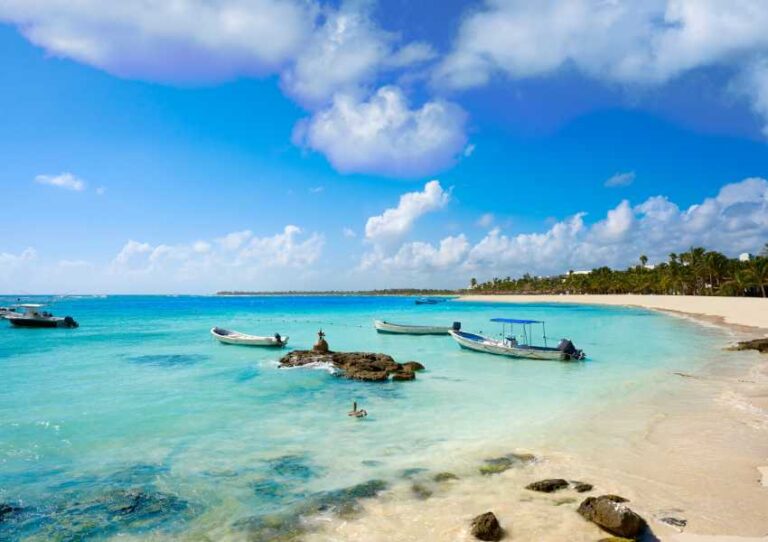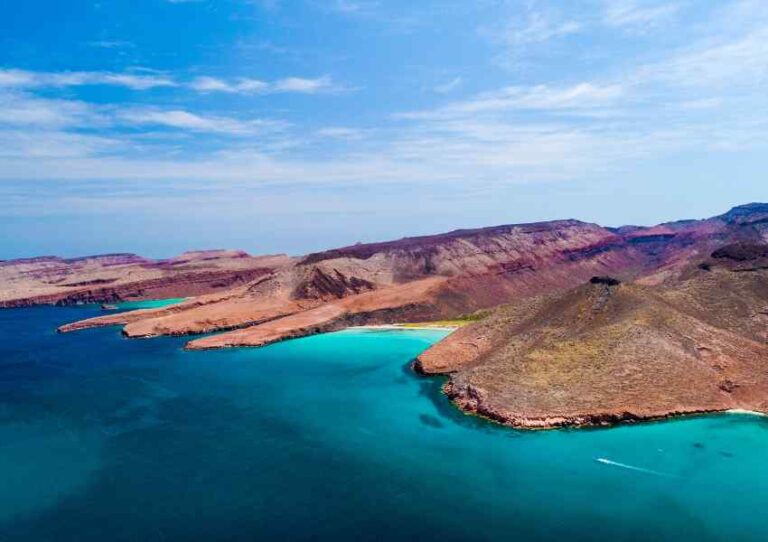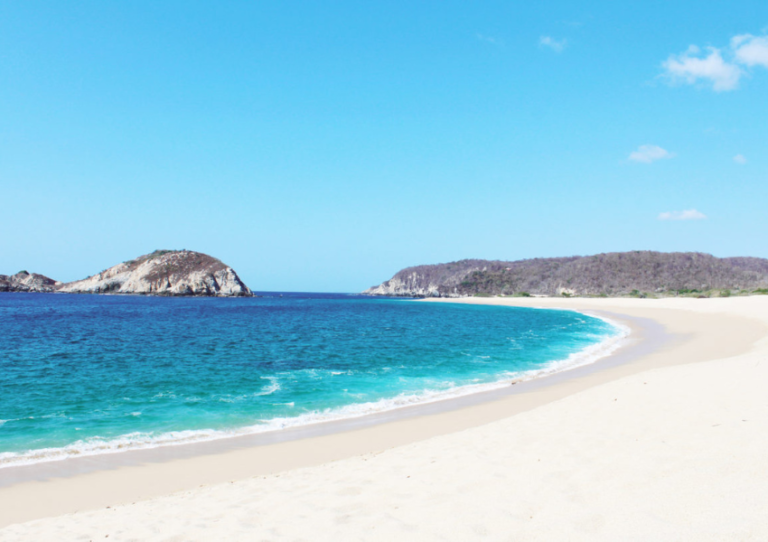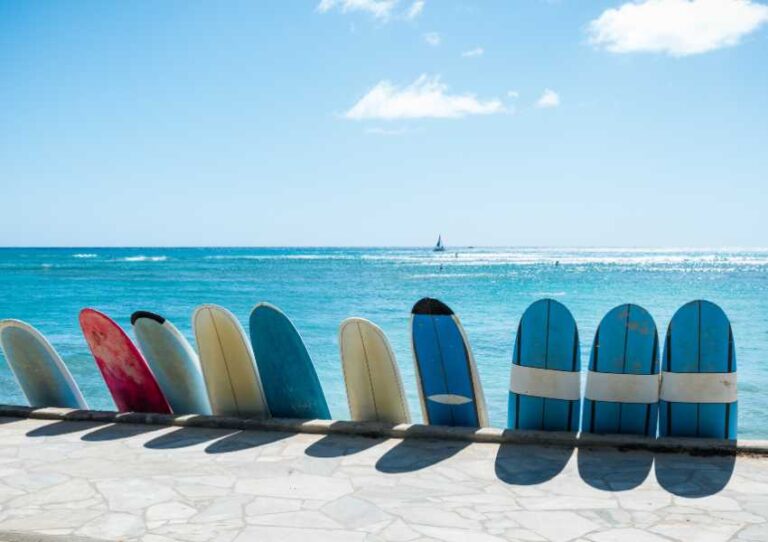Where to See Whales in Mexico: 10 Incredible Destinations for Whale Watching in Mexico
Wondering where to see whales in Mexico? You’ve come to the right place for a lowdown on the best destinations for whale watching in Mexico.
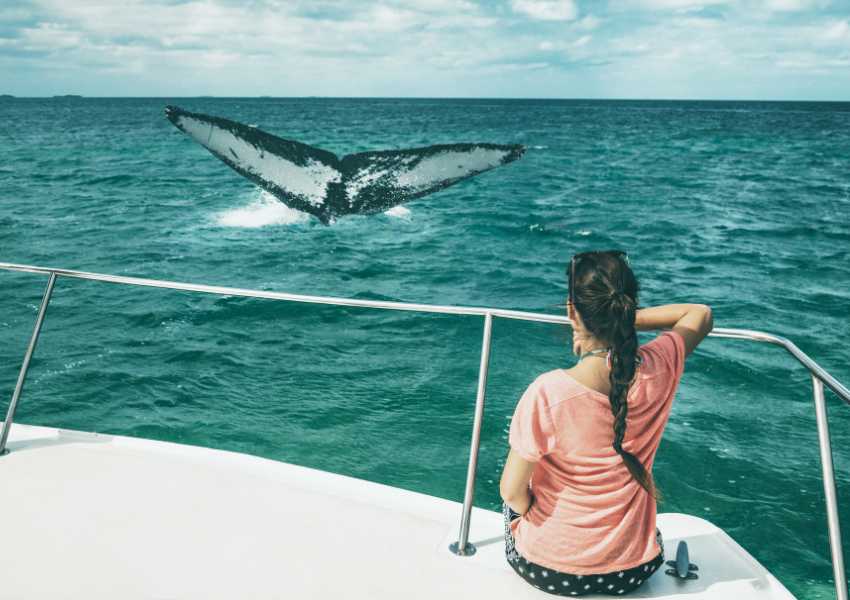
With its extensive coastline, warm waters, and incredible marine ecosystems, Mexico is a haven for whale watching. Every year, thousands of these impressive mammals migrate to this part of the world, to the delight of marine life and nature lovers.
Whales come from the frigid waters in high latitudes that surround the northern U.S., Alaska, and Canada. Every year, they seek the warmer seas of the Pacific Ocean and the Gulf of California – also known as the sea of Cortez – to breed and nurse their young. The sight of them in their natural environment is a breathtaking and unforgettable experience.
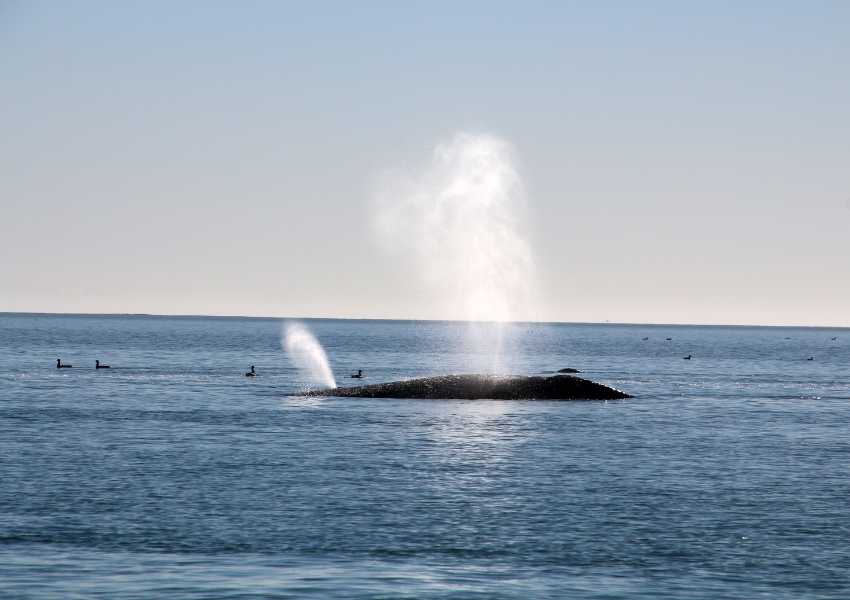
Mexico offers unique opportunities to witness the giants of the sea in their natural habitat. Whether you yearn to spot the gray whale sanctuaries of Baja California Sur, the humpback-filled waters of Puerto Vallarta, or the quieter bays of Oaxaca, you´re guaranteed a thrilling and memorable adventure.
If you´re crafting a trip and want to experience the sight of these majestic marine creatures, here’s a list with the 10 best places for whale watching in Mexico at its finest, as well as a few useful facts and tips to make the most of your adventure.
What Whale Species Can Be Spotted in Mexico?
The warm waters that surround Mexico are ideal for several species of whales, most notably gray, blue, and humpback. If you have a preference for one species or another, you´ll want to check out which destinations are best to see each one.
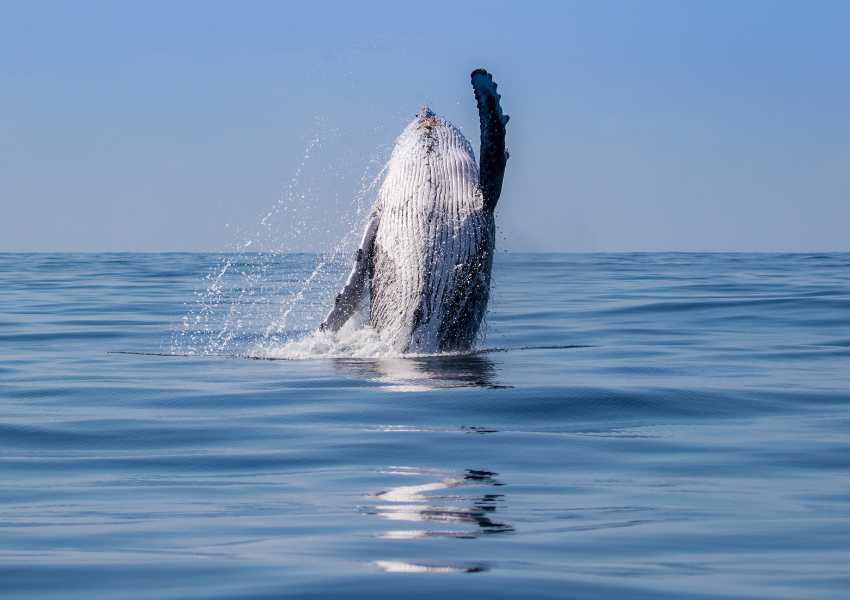
When Is the Best Time of the Year for Whale Watching in Mexico?
In general terms, the best time of the year to see whales in Mexico is from December to April, although specific months may vary depending on the species and location. For example, gray whales are more frequently seen from january to March, while humpbacks are commonly seen from mid-December to March.
10 Wonderful Destinations for Whale Watching in Mexico
When it comes to whale watching in Mexico, Baja California Sur is the crown jewel. The unique geography and warm waters of the Pacific Ocean surrounding the southern part of the Baja peninsula are ideal for the breeding of several species of whales, particularly the gray whale.
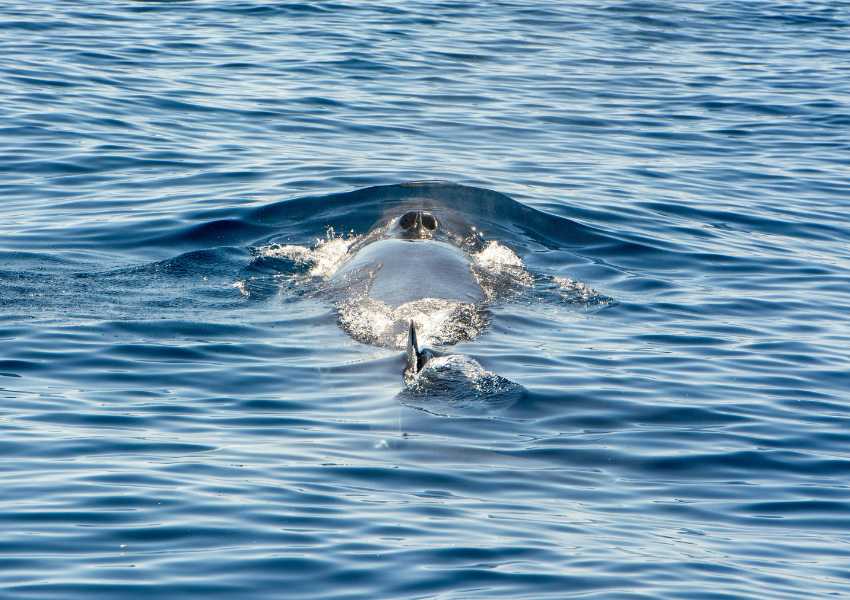
Further south on the western coast of Mexico, the states of Jalisco and Riviera Nayarit are excellent destinations for whale watching too, as their warm waters are swarming with humpback whales during their annual migration.
It typically runs from mid-December to late March. The calm seas, scenic coastal landscapes and a thriving marine environment make for a unique experience.
On the other hand, if you prefer to avoid crowds and explore quieter destinations, the southern coast of Oaxaca has some hidden gems for whale watching in Mexico.
The region’s calm waters attract humpback whales from December to March. Specifically, Huatulco’s whale watching tours are much appreciated for their small group sizes, offering a more personal and less commercialized experience.

Without further ado, here is a list of the best destinations for whale watching in Mexico that will hopefully help you in planning one of the most magnificent natural adventures ever.
1. Ensenada (Baja California)
For travelers in the US looking for a quick getaway to Mexico, Ensenada in Baja California is an ideal choice.

Situated just a two-hour drive from the U.S. – Mexico border, this coastal city offers easy access to prime whale watching opportunities from mid-December to April, when gray whales, and occasionally blue whales, pass through the area.
Although Ensenadas waters are colder than those around Los Cabos and other Baja California Sur destinations – bear in mind the Baja Peninsula houses two different states along its length of 932 miles! – it is nonetheless a good spot for spotting whales on their way to milder, tropical environments. Baja California’s coast is considerably more pleasant than the Arctic waters they leave behind during North America’s winter months!
The city’s proximity to the United States border, combined with its vibrant food and wine scene, makes Ensenada a fantastic destination for a weekend whale watching getaway..
2. Loreto Bay National Marine Park (Baja California Sur)
Loreto Bay National Marine Park is home to an huge array of marine wildlife, including several whale species.
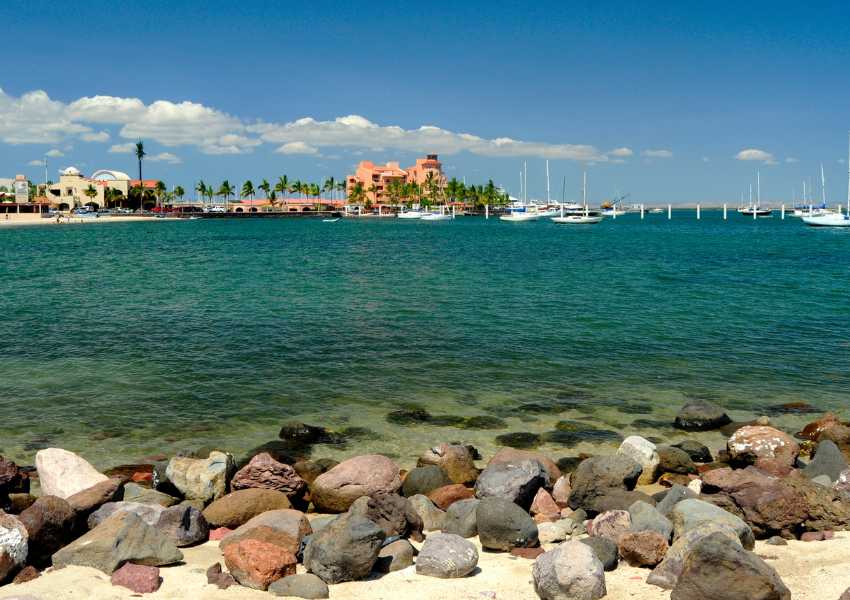
From January to April, you can sight humpback whales, blue whales, and fin whales as they swim gracefully in the protected Gulf of California that bathes this area of the Baja peninsula.
The clear, calm waters make it relatively easy to spot whales as they swim gracefully, often accompanied by pods of dolphins.
3. Cabo San Lucas (Baja California Sur)
Cabo San Lucas is world renowned for its luxury resorts and prime golf courses, but also for being a premier destination for whale watching in Mexico. From mid-December to mid-April, you’re guaranteed sightings of humpback whales that dominate the waters around Cabo, due to its proximity to important whale migration routes.
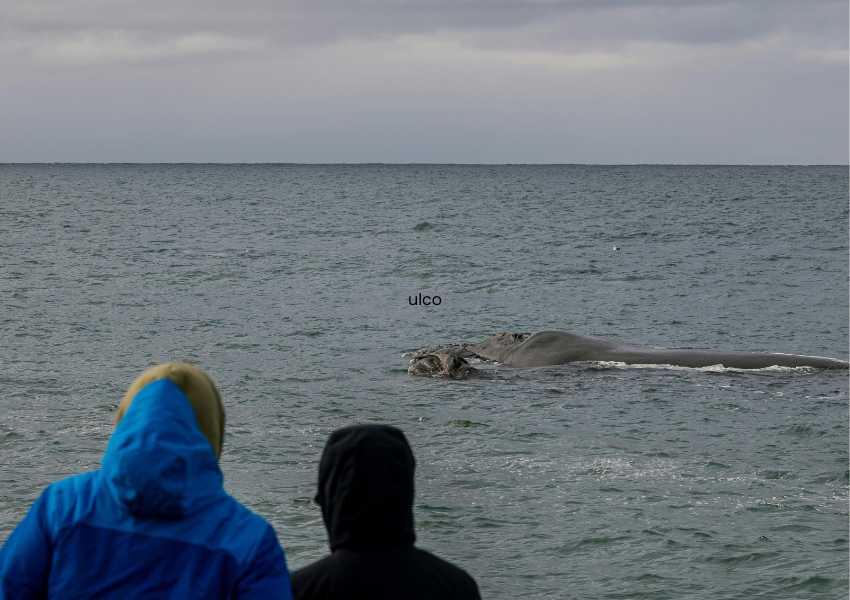
However, you might get lucky and spot some gray whales, sperm whales, and even a few orcas. Tour operators offer options that range from luxurious catamarans to small, more intimate boats that allow for more personal encounters with these impressive creatures.
4. La Paz (Baja California Sur)
If you´re aiming to see blue whales, presumably the largest animal on earth, La Paz in Baja California Sur is an ideal place for that. The waters of La Paz are a natural habitat for blue whales, best spotted in February and March.
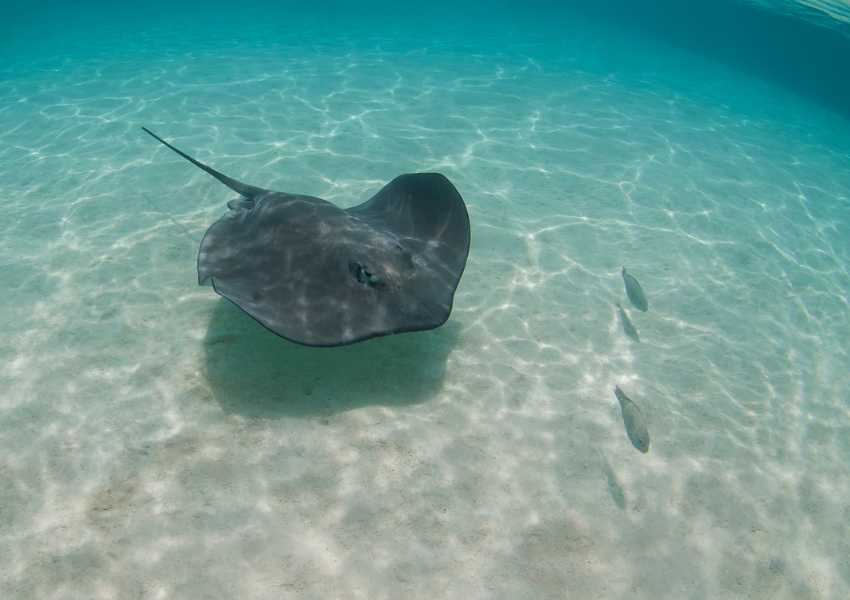
The serene waters of the Sea of Cortez, often referred to as “the aquarium of the world”, provide the perfect setting for whale watching, with pristine conditions and minimal boat traffic.
While blue whales are the star attraction, you might nevertheless be surprised by humpbacks, fin whales, whale sharks, and other incredible marine species like stingrays and dolphins. This makes la Paz a great destination for a well-rounded, fascinating marine adventure.
5. Bahía Magdalena (Baja California)
Bahía Magdalena is a fantastic spot for whale watching in Mexico, harboring a series of lagoons along the western coast of Baja California Sur where gray whales flock from late December to March.
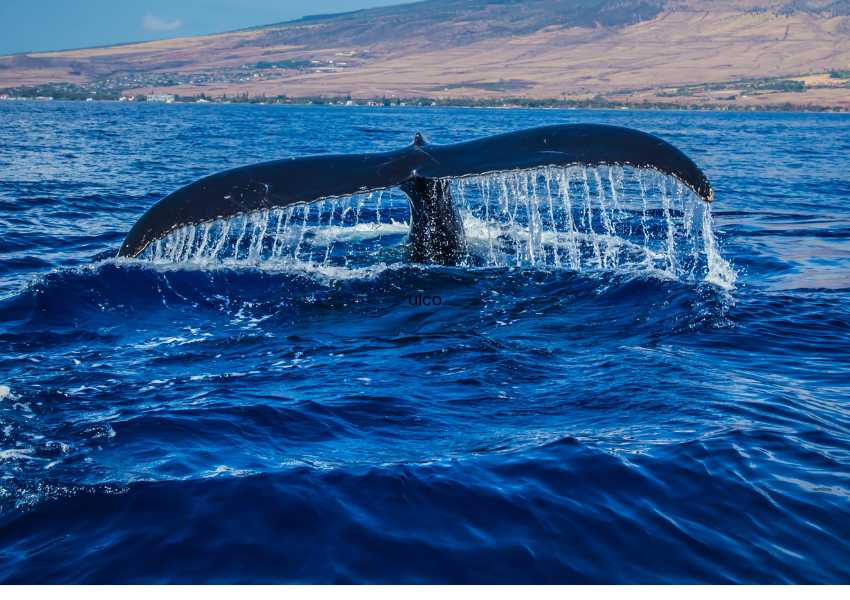
This bay is one of the best destinations in Baja California, Mexico for whale watching. What makes Bahía Magdalena truly special is the opportunity for close interactions with the marine mammals.
Gray whales are known to approach boats and sometimes will even allow themselves to be petted, making this a magical, once-in-a-lifetime-opportunity.
Although Bahía Magdalena is located in front of Puerto San Carlos, which is in turn 2-3 hour drive from popular destinations like La Paz, Loreto, Cabos, and Todos Santos, it is very much worth the effort to get there. This is an ideal spot for intimate whale watching encounters.
6. Laguna Ojo de Liebre – Guerrero Negro (Baja california Sur)
Situated near the town of Guerrero Negro, Laguna Ojo de Liebre (Scammon’s Lagoon) is one of the most famous gray whale sanctuaries in the world. Every year between January and April, hundreds of gray whales travel thousands of miles from the Arctic to get there.
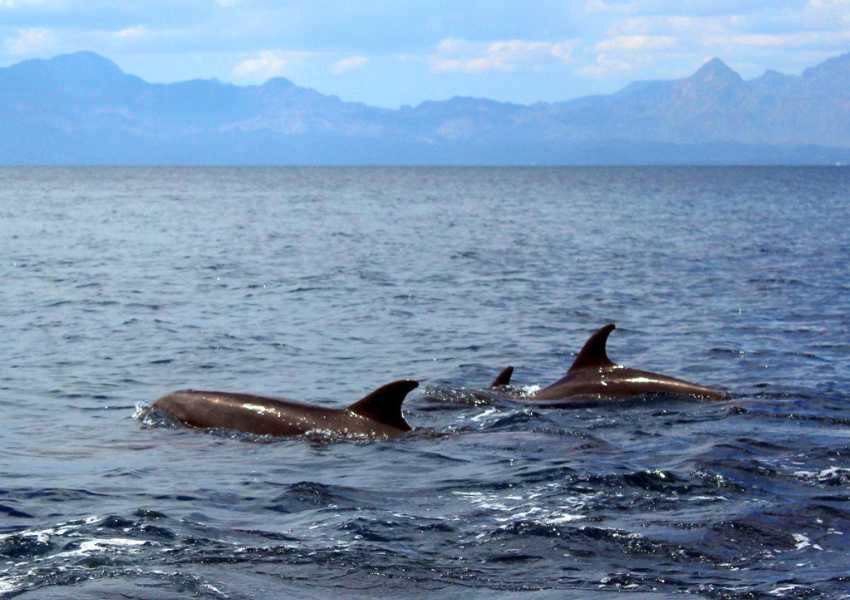
The reason gray whales flock to this protected natural sanctuary, which is part of El Vizcaíno Biosphere Reserve, is that the calm, salty waters of the lagoon are ideal for breeding and nursing their young.
Visitors are welcome to see the whales up close, as they nurse their calves in the protected lagoon, which was designated as a UNESCO World Heritage Site. Just like Bahía Magdalena, some traveling is required to get here (actually, driving times are at least twice as long), but the effort is amply compensated if you are a gray whale aficionado.
7. Puerto Vallarta (Jalisco)
Puerto Vallarta is a fantastic destination for vacatining in general, and for whale watching too. Its warm waters attract humpback whales during their annual migration. The calm seas, scenic coastal landscapes and a thriving marine environment make for a unique experience.

Puerto Vallarta is an exciting enough beach destination in Mexico, but visiting while humpback whales are around makes it spectacular. You’ll find plenty of boat tours that will take you to watch the majestic humpbacks in their natural environment, a unique and unforgettable experience.
The Puerto Vallarta whale season runs from December to March, although the best months are January and February, when the coastal city’s nearby waters are literally swarmed with these intriguing beauties.
You might want to read: Discover the Best Beaches in Nayarit
8. Punta Mita (Nayarit)
A chic coastal destination known for its luxury resorts, Punta Mita has deep waters that shelter humpback whales that visit the region to mate and give birth, making it a prime spot for whale watching in Mexico. Actually, all of the Banderas Bay area in the state of Nayarit is great when it come to where to see whales in Mexico. What makes Punta Mita special is the accessibility of high-end accommodations and tours for all styles and budgets.
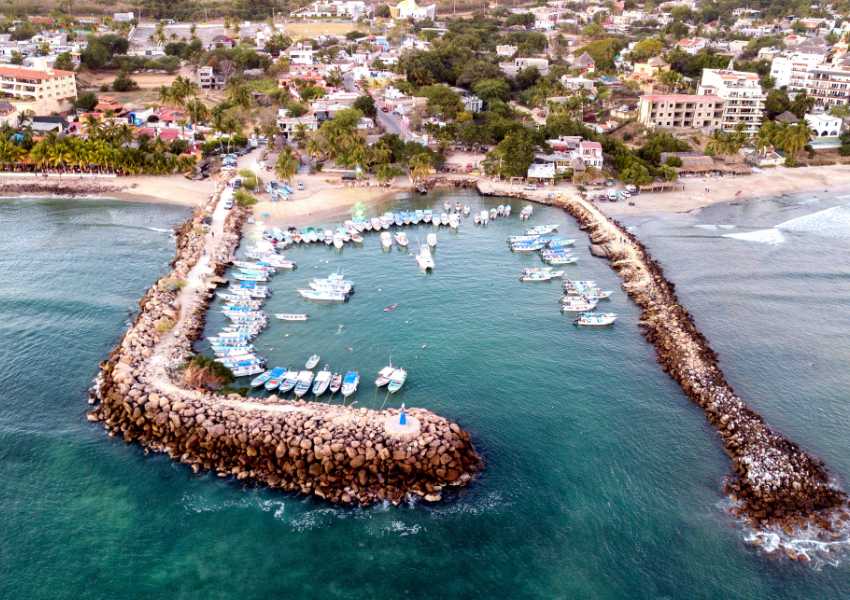
During whale season, you will easily find an excursion that meets your schedule needs. Daily tours with experienced guides take off in search of the almost mythical mammals. Some of them provide snacks, snorkeling opportunities to see more marine life, and even hydrophones that allow you to hear the whales’ breathtaking songs beneath the waves!
If you visit Punta Mita between mid-December and March, you are guaranteed the opportunity to witness the tail slapping, breaching, and other playful acrobatics of humpbacks, an experience you won’t soon forget. But that’s not all. You might get lucky enough to see a few gray whales too, and maybe even some orcas!
9. Sayulita (Nayarit)
Whale watching in Sayulita is a magical experience that attracts travelers and marine life adventurers from all over the world. Between December and March, humpback whales migrate from cold northern waters to the warm coasts of the Mexican Pacific.
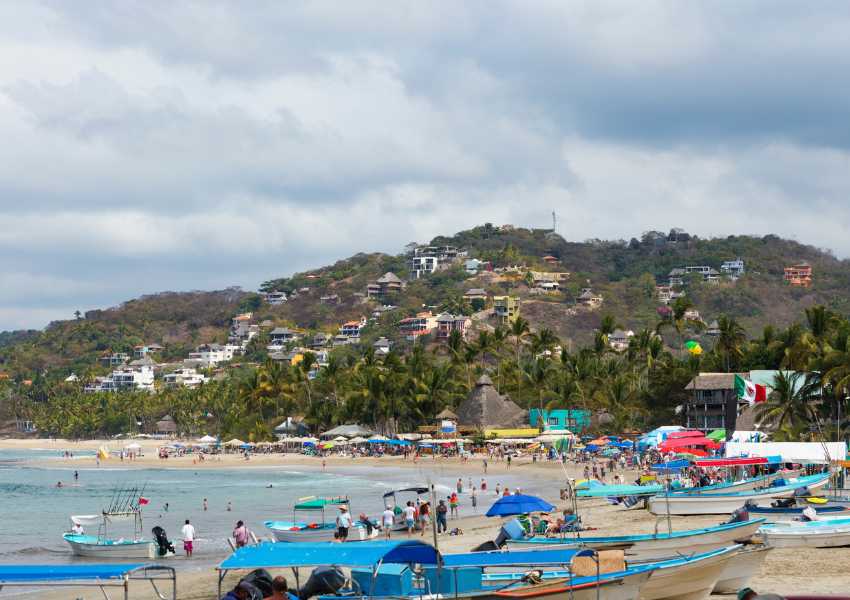
Located on the Nayarit Riviera, this laid-back, picturesque beach town is a prime destination for observing whales in Mexico as they emerge and perform impressive jumps in the ocean. With tours departing from Puerto Vallarta and other nearby docks, spotting humpbacks is pretty much guaranteed, along with dolphins, manta rays, and other marine species.
Famous for its surfing waves, Sayulita also offers a safe, guided experience with great opportunities for learning about the biology and behavior of these incredible mammals. Beyond the visual spectacle, which is wondrous, guides are pretty well versed on migration patterns, whale songs, and their importance in the marine ecosystem.
10. Huatulco (Oaxaca)
Much further south along mexico’s western coast, Huatulco is another splendid destination for whale watching in Mexico, especially if you prefer to avoid crowds in a quieter beach town. Bathed by the warm Pacific Ocean waters, Huatulco´s seven bays and calm waters attract humpback whales from December to March – they leave earlier because the have to travel longer to be back home in the Spring.
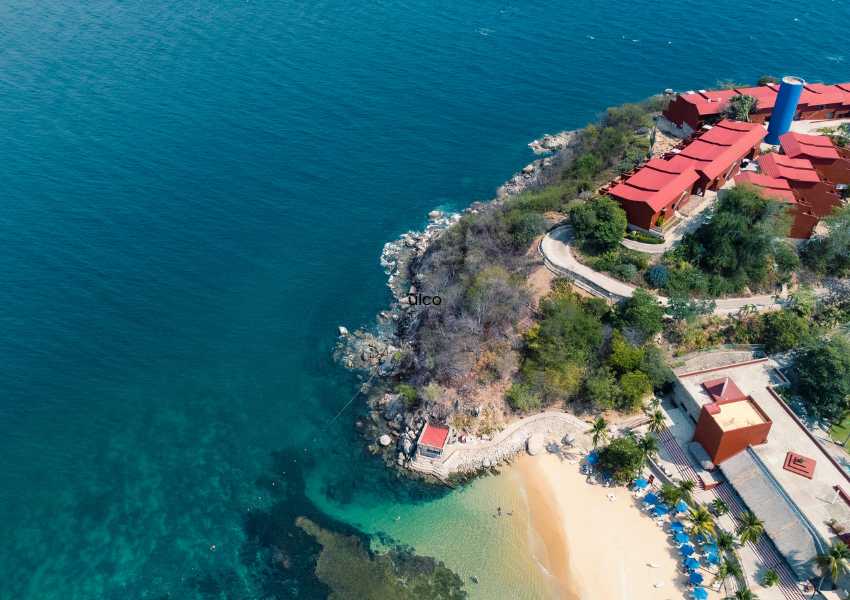
Although it is less known as a whale destination that its counterparts in Jalisco, Nayarit, and the Baja California’s, partly due to the fact that fewer whales make it all the way down there, Huatulco is much appreciated by connoisseurs. The lush coastal landscapes and uncrowded beaches also make Huatulco a great place to relax after a day day of exploring the ocean and its captivating creatures.
Specifically, Huatulco´s whale watching tours are famous for their small group sizes, offering a more personalized and less commercialized experience, often with biologists on board who receive signals about sightings from watchers at the lighthouse.
Aside from whales, the waters around Huatulco are home to a fascinating array of marine life, including dolphins and manta rays.
Tips for Enhancing Your Whale Watching Adventure in Mexico
Here are a few tips that will help you get the most out of your whale watching escape.
1. Choose the right season
- North and Central Mexico Pacific Coast – Baja California, Nayarit, Jalisco: Best from December to April, when gray whales migrate from Alaska to breed in warmer waters.
- Sea of Cortez: Mid-January to April is ideal, as this is when you’ll find blue, humpback, and other whale species.
- Southern Mexico Pacific Coast: Whale season is shorter here than up north. Mid-December to mid-March is the best time,
2. Select a prime location according to your travel aims and style
Mexico offers several whale watching destinations where you can sight different species at different times. Also consider the time you’ll spend outside of the whale watching tours.
3. Opt for responsible tour operators
- Hire companies with sustainable practices that respect marine life and follow government guidelines for whale-watching.

4. Consider boat type and size
- Smaller boats can offer a more intimate experience but may feel the waves more. Larger boats offer stability and often have added amenities.
5. Bring the essentials
- Binoculars, sunscreen, hat, polarized sunglasses, and a waterproof camera or phone case. Also, pack layers for cooler weather on the water, even in warm areas.
6. Book early for peak times
- Tours fill up quickly during peak season, so booking a few weeks in advance is wise, especially in popular locations like Cabo and Puerto Vallarta.
7. Time of the day matters
- Mornings tend to have calmer waters, making it easier to spot whales and making for a more comfortable ride.
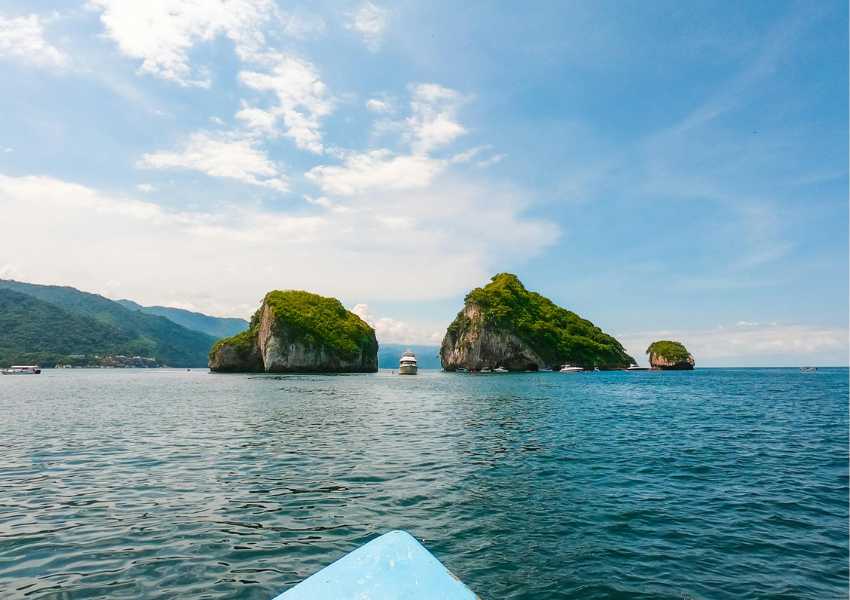
8. Be patient and respectful
- Remember, whale sightings can’t be guaranteed as they’re wild animals. But the thrill of spotting one makes the wait worthwhile!
9. Bring motion sickness remedies
- If you’re prone to seasickness, have ginger candies or medication on hand to help keep you comfortable.
10. Pack layers or a light jacket
- Pack layers for cooler weather on the water, even in warm areas, just in case. Remember this is winter time; it might get a bit chilly, especially in the early morning and evenings.
Where to See Whales in Mexico: Conclusion
Mexico is considered one of the best countries in the world for whale watching, offering unique opportunities to witness the gentle giants of the sea in their natural habitat.
Whether you choose the gray whale sanctuaries of Baja California Sur, the humpback-filled waters of Puerto Vallarta, or the quieter bays of Oaxaca, you’re guaranteed to have a thrilling and memorable adventure.
So pack your bags, grab your binoculars, and get ready for a magical experience you’ll never forget!


